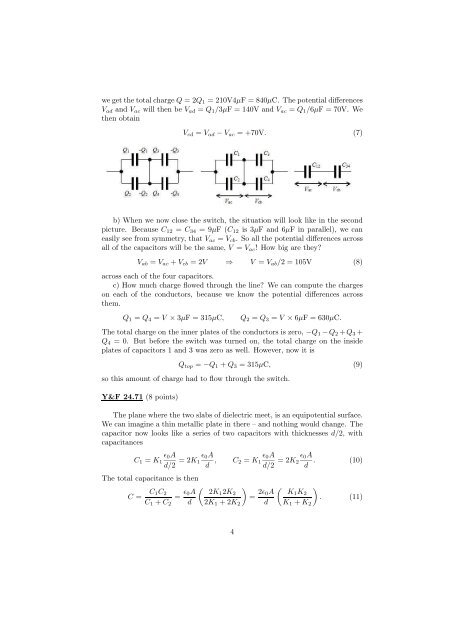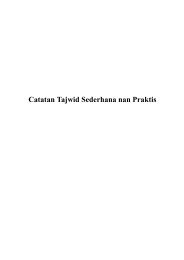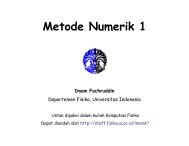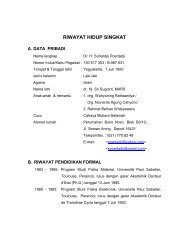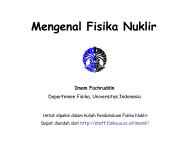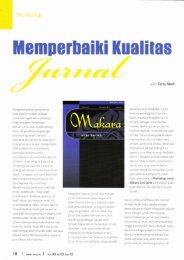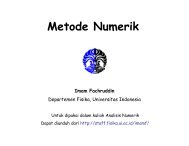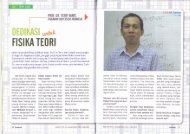8.02X Electricity and Magnetism
8.02X Electricity and Magnetism
8.02X Electricity and Magnetism
Create successful ePaper yourself
Turn your PDF publications into a flip-book with our unique Google optimized e-Paper software.
we get the total charge Q = 2Q 1 = 210V4µF = 840µC. The potential differencesV ad <strong>and</strong> V ac will then be V ad = Q 1 /3µF = 140V <strong>and</strong> V ac = Q 1 /6µF = 70V. Wethen obtainV cd = V ad − V ac = +70V. (7)b) When we now close the switch, the situation will look like in the secondpicture. Because C 12 = C 34 = 9µF (C 12 is 3µF <strong>and</strong> 6µF in parallel), we caneasily see from symmetry, that V ac = V cb . So all the potential differences acrossall of the capacitors will be the same, V = V ac ! How big are they?V ab = V ac + V cb = 2V ⇒ V = V ab /2 = 105V (8)across each of the four capacitors.c) How much charge flowed through the line? We can compute the chargeson each of the conductors, because we know the potential differences acrossthem.Q 1 = Q 4 = V × 3µF = 315µC,Q 2 = Q 3 = V × 6µF = 630µC.The total charge on the inner plates of the conductors is zero, −Q 1 −Q 2 +Q 3 +Q 4 = 0. But before the switch was turned on, the total charge on the insideplates of capacitors 1 <strong>and</strong> 3 was zero as well. However, now it isQ top = −Q 1 + Q 3 = 315µC, (9)so this amount of charge had to flow through the switch.Y&F 24.71 (8 points)The plane where the two slabs of dielectric meet, is an equipotential surface.We can imagine a thin metallic plate in there – <strong>and</strong> nothing would change. Thecapacitor now looks like a series of two capacitors with thicknesses d/2, withcapacitancesǫ 0 AC 1 = K 1d/2 = 2K ǫ 0 A1d ,The total capacitance is thenC = C 1C 2= ǫ 0AC 1 + C 2 dC ǫ 0 A2 = K 1d/2 = 2K ǫ 0 A2d . (10)( ) 2K1 2K 2= 2ǫ 0A2K 1 + 2K 2 d( )K1 K 2. (11)K 1 + K 24


